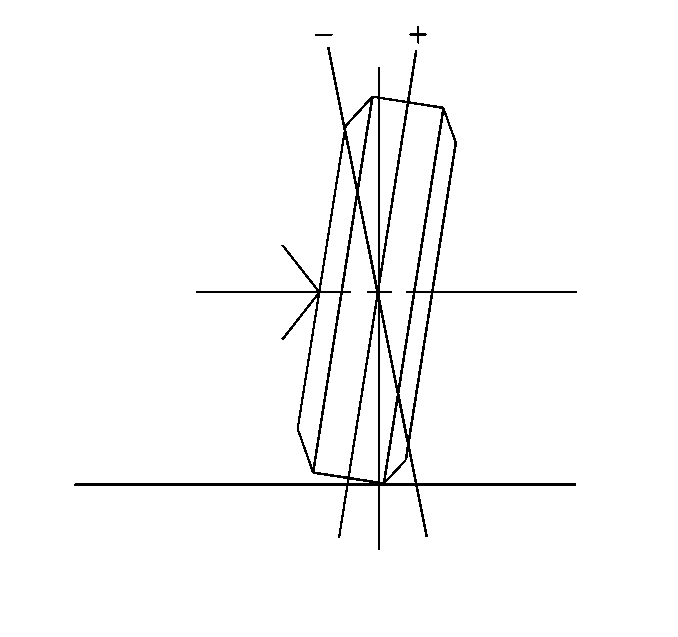Chevrolet Sonic Repair Manual: Camber Description

Camber is the tilting of the wheels from the vertical when viewed from the front of the vehicle. When the wheels tilt outward at the top, the camber is positive (+). When the wheel tilts inward at the top, the camber is negative (−). The amount of tilt is measured in degrees from the vertical. Camber settings influence the directional control and the tire wear.
Too much positive camber will result in premature wear on the outside of the tire and cause excessive wear on the suspension parts.
Too much negative camber will result in premature wear on the inside of the tire and cause excessive wear on the suspension parts.
Unequal side-to-side camber of 1 degree or more will cause the vehicle to pull or lead to the side with the most positive camber.
Cross Camber is the difference between the left camber value and the right camber value.
Cross Camber = L camber − R camber
 Aluminum Wheel Refinishing
Aluminum Wheel Refinishing
Finish Damage Evaluation Procedure
Note:
If the wheels are chrome-plated, do not re-plate or refinish
the wheels.
If the wheels are polished aluminum, do not r ...
 Caster Description
Caster Description
Caster is the tilting of the uppermost point of the steering axis either forward
or backward, when viewed from the side of the vehicle. A backward tilt is positive (+)
and a forward tilt ...
Other materials:
Body Lock Pillar Upper Trim Panel Replacement (Sedan)
Body Lock Pillar Upper Trim Panel Replacement
Callout
Component Name
Preliminary Procedure
Disable the SIR system. Refer to SIR Disabling and Enabling.
Remove the body side trim panel. Refer to Body Side Trim Panel Replace ...
Master Cylinder Replacement
Removal Procedure
Warning: Refer to Brake Fluid Irritant Warning.
Caution: Refer to Brake Fluid Effects on Paint and Electrical
Components Caution.
Place the ignition switch in the OFF position.
Remove the battery. Refer to Battery Replacement.
Disconnect ...
Steering Linkage Outer Tie Rod Inspection
Special Tools
GE-8001 Dial Indicator Set
For equivalent regional tools, refer to Special Tools.
Note: This inspection procedure does not supersede local government
required inspections that have more stringent requirements.
Inspect the outer tie rod seal. If the outer tie rod ...
0.0047
